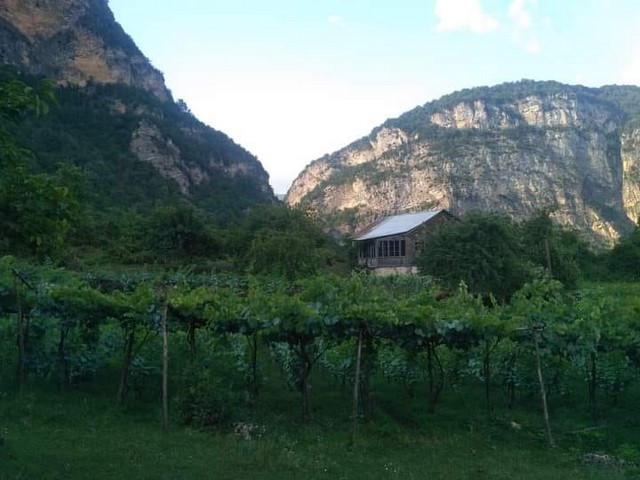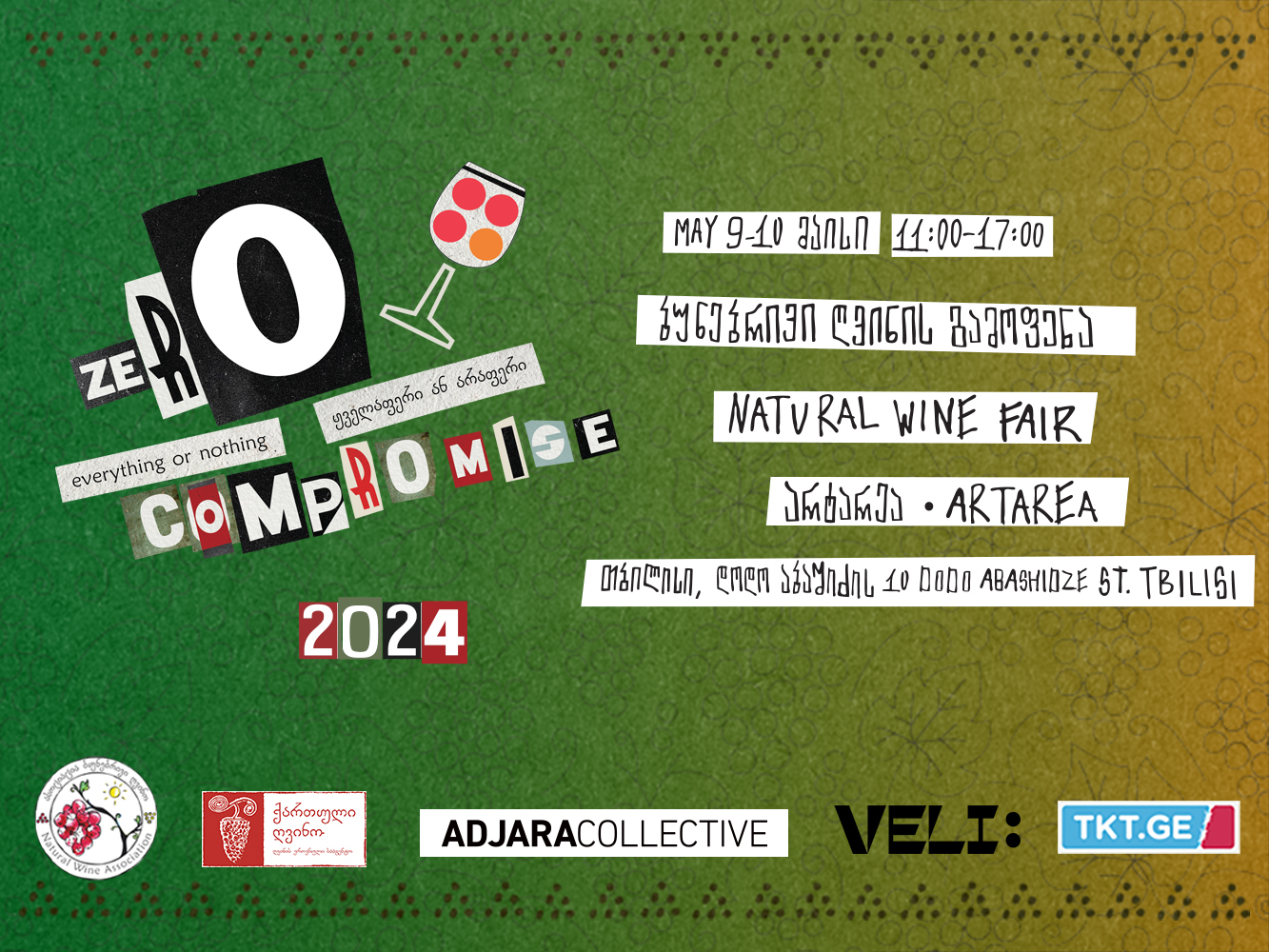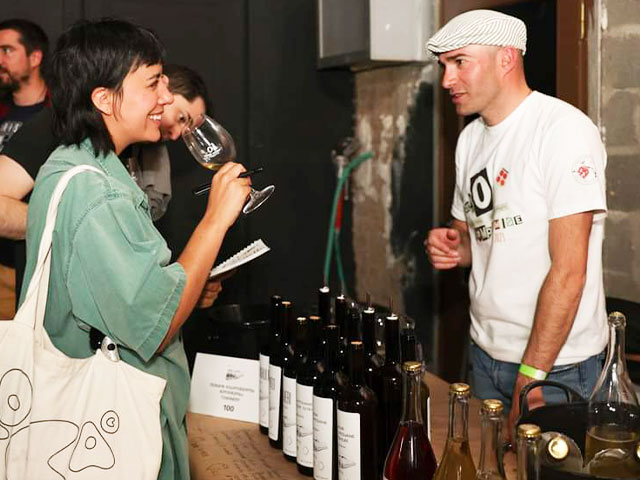News . 10-04-2024

Natural Wine of Lechkhumi and a Great Future
Little Lechkhumi, lost in the mountains and hidden in the forests, is one of the best regions for Georgian viticulture and winemaking. Lechkhumi has only one district center, and the history of this wine region is written in Tsageri and the surrounding villages. The best vineyards of Lechkhumi are planted on the highly inclined sunny slopes in the valley of the two main rivers: Rioni and Tskhenistskali.
The town of Tsageri, located in the Tskhenistskali valley, is surrounded by beautiful villages. Here lies the legendary Zubi-Okureshi-Isunderi microzone, where the main grape variety is one of the most valuable grapes in Eastern Europe - Usakhelouri. There is also the village of Orbeli in the Tskhenistskali valley, where the famous red grape variety of Lechkhumi, Orbeluri Ojaleshi, is widespread. This variety can be found in abundance in other villages of Tsageri municipality, but Orbeli itself is considered the main terroir of Orbeluri Ojaleshi, which is also evident from the name of the grape variety.
Most of the indigenous grape varieties of Lechkhumi are lost and forgotten. Restoring them is a difficult task, and there are still no enthusiasts who will take up this work. Currently, the main production grape variety of Lechkhumi is Tsolikouri. A variation of this Imeretian grape variety – Green Tsolikouri is widely spread in Lechkhumi. Locals also refer to it as Lechkhumuri Tsolikouri. The Tvishi-Alpana microzone located in the Rioni valley is special and distinguished. Tsolikouri harvested there is considered to be the highest quality wine grape. In addition to the semi-sweet "Tvishi" popular from the Soviet period, excellent white dry wines are also made from it. In the same valley lies the village of Orkhvi, where the tradition of Qvevri winemaking has been preserved to this day. Unfortunately, this cannot be said about many villages in Georgia.
The Natural Wine Association has a total of three member small wineries from little Lechkhumi. Considering the reality that generally existed in Georgian viticulture and winemaking over the last 20 years, the appearance of people who take care of the vineyards in Lechkhumi according to strict organic rules and who make natural wine in the cellars can be seen as a step forward.
"Asatiani Wine" is one of the oldest members of the Natural Wine Association. The winery is located in Tvishi village of Tsageri municipality. As the name suggests, this is a winery of Asatiani family which is based on old family winemaking traditions. "Asatiani Wine" produces dry and semi-dry wines from Tsolikouri, following the rules of natural winemaking. Vineyards are planted around the winery. Most of the vines are old - 70 years old. Therefore, Asatianis are trying to renew the old vineyards. "Asatiani Wine" is mainly sold on export.
The climate of the microzone and the soil full of minerals give a special taste to the natural wine made from Tsolikouri of Tvishi. "Mushkudiani Winery", a member of the Natural Wine Association, is also located in the village of Tvishi. Dimitri and Nino Mushkudiani’s father, Valery Mushkudiani, and their 83-year-old grandmother take care of the vineyards and winery for the most part. Dimitri and Nino Mushkudiani work on the development strategy and marketing of the winery. The main wine variety of the Mushkudianis, like the Asatianis, is Tvishi Tsolikouri, which is made in tanks. The family has also already got several Qvevri and in the future they will also produce Qvevri wine. The vineyards of Mushkudianis, as well as other members of the Association, are sprayed with treatments allowed in organic viticulture. Their wine is made using natural methods, without any additives.
A small family winery “Tamani” located in the village of Gveso, next to the historic Gveso Castle, has recently joined the unity of natural winemakers. The name of the winery is a word made up of the names of the children of the husband and wife - Ekaterine Tsvariani and Zaza Mushkudiani. It is interesting that in the vineyards of “Tamani” two types of Tsolikouri are grown - yellow and green. Wines made separately from grapes of these variations of Tsolikouri grown in the same village, in the same climatic conditions and on the same soil, will undoubtedly be interesting for people interested in researching wine grape varieties. In addition to the quality of the wine, the location of Tamani’s vineyards and cellar is attractive and distinctive. Soon Tamani will receive Georgian and foreign tourists.
Even though another winemaker of the Association, Zaza Gagua, does not have a winery in Tsageri as both his vineyards and his winery are located in the village of Targameuli in the Martvil municipality, he had a great interest in Orbeluri Ojaleshi as soon as he started winemaking. That’s why along with the famous Megrelian aboriginal Ojaleshi harvested in Samegrelo for years, he makes in his winery the Orbeluri Ojaleshi purchased from Gocha Burjaliani, a partner viticulturist from Orbeli. Thus, Zaza Gagua’s “Martvilis Marani” winery is interesting because both Megrelian and Lechkhumuri Ojaleshi are made side by side.
Specialists in the field of wine agree that Lechkhumi is a region of great winemaking potential, and both white and red, completely unique grape varieties here can bring a lot of positive things to Georgian winemaking as a whole. Wine is valued not only by fame, but also by its uniqueness. One of its main positive features is its uniqueness. In this regard, Lechkhumi is really a leader region!
Levan Sebiskveradze





